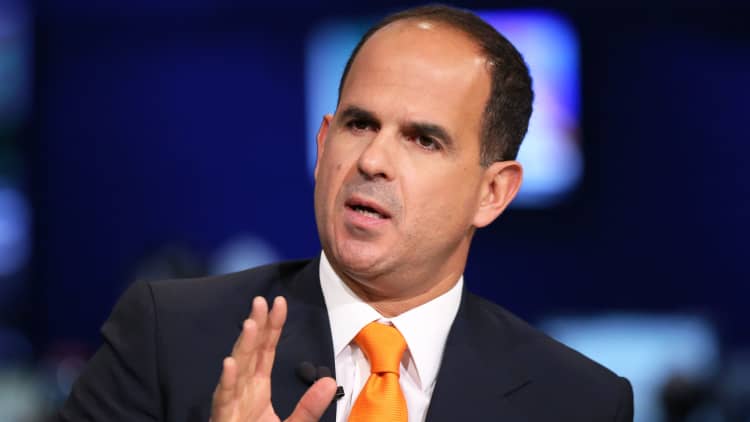Pamela Meyer, an author and certified fraud examiner, says we are lied to anywhere from 10 to 200 times each day, according to her 2011 TED Talk, "How to spot a liar."
The workplace, in particular, creates the perfect setting for dishonesty to fester because of the heavy competition and high stakes, she tells CNBC Make It. Knowing this, it's imperative that employers hire workers who are trustworthy and honest, says Meyer.
She reveals that there are certain strategies that business leaders can use in an interview or negotiation, which she calls "liespotting." Here are six ways to help you spot a liar at work:
1. Find out the person's baseline
Meyer says that everyone has a baseline, which is how they act regularly. To figure out a person's baseline, or their "norm," ask them simple questions like, "How was your weekend?" or "What are you up to?"
By asking these questions, you can get a sense of who someone is when they're calm, says Meyer. For example, someone who sits still when at their baseline and starts suddenly tapping their foot as questions become deeper is likely feeling uncomfortable.
2. Ask open-ended questions
Asking open-ended questions will likely get you closer to the truth, says Meyer. She gives the following example of an open-ended versus close-ended question: "Hey, what happened that evening?" compared to "Where were you on July 10th at 5:45 PM?"
The first question does not put the person on the defensive, whereas the second question is much more accusatory and comes from a place of moral superiority, says Meyer.
3. Keep an eye out for nonverbal cues
Nonverbal cues include forms of communication like body language, distance and touch. Meyer says that when some people are lying they will "unconsciously try to disappear."
They'll also use "barrier objects like a coffee cup or their phone to give themselves an unconscious zone." Other things to look out for include hand wringing, curling of the toes and a lowering or softening of the voice.
4. Look for verbal cues
"Look for if they use qualifying or bolstering statements," says Meyer. Qualifying statements start with "From what I remember" or "As far as I recall." They give an "opt-out" for the subject because it's based on their memory.
Bolstering statements normally sound like this: "Well, to tell you the truth" or "In all honesty" and are used to overemphasize the sincerity and truthfulness of a comment.
Liars may also repeat the question verbatim so they can have more time to conjure up a response, says Meyer.
Here's a prime example: If an interviewer asks, "How long were you working at that financial firm?" a deceptive interviewee may respond with the same question even though he or she clearly heard it.
Another sign that a person is lying, says Meyer, is through an unnatural speech pattern. For instance, she says most people have a certain cadence when they speak. When trying to think of a lie and also act normal and talk normally, there's a rise in your "cognitive load," or the amount of mental effort required to function.
When a liar is processing too much information at once, it can result in an unnatural way of talking. "Raising the cognitive load to see these cues is what liespotting is all about," says Meyer.
5. Take note of the person's attitude
Someone that's lying will often have a "whiny, uncooperative attitude," Meyer says. "They may ask if the conversation is ending soon." An honest person does just the opposite and "will want to find out the truth as much as you," she adds.
In her TED Talk, Meyer says that an honest person is "going to show they're on your side. They're going to be willing to brainstorm, name suspects, provide details and ... recommend strict rather than lenient punishment."
6. Pay attention to how a story is told
"A deceptive person will tell a long, involved story or prologue," says Meyer. They'll also tell it in strict chronological order, pepper it with too many details in random places and push the answer to your question to the very end.
For example, if a boss asks an employee why he or she was late, a deceptive person will likely start by saying: "So I was on the 1 train, which by the way was freezing this morning, and it was so jam-packed. I thought it would never come."
An honest person will get straight to the point, she says, and then add emotional context at the end. For example: "I accidentally slept in and missed the train. I'm so sorry I was late."
Meyer warns that these singular "cues" are not telltale signs that someone is lying. Therefore, it's "important to look for two or three verbal and nonverbal cues" to determine the likelihood of deception.
Like this story? Like CNBC Make It on Facebook.
See also:
How understanding the way your brain works can help you be more successful
How overcoming the fear of failure helped Steve Jobs, Tim Ferriss and Bill Gates succeed




